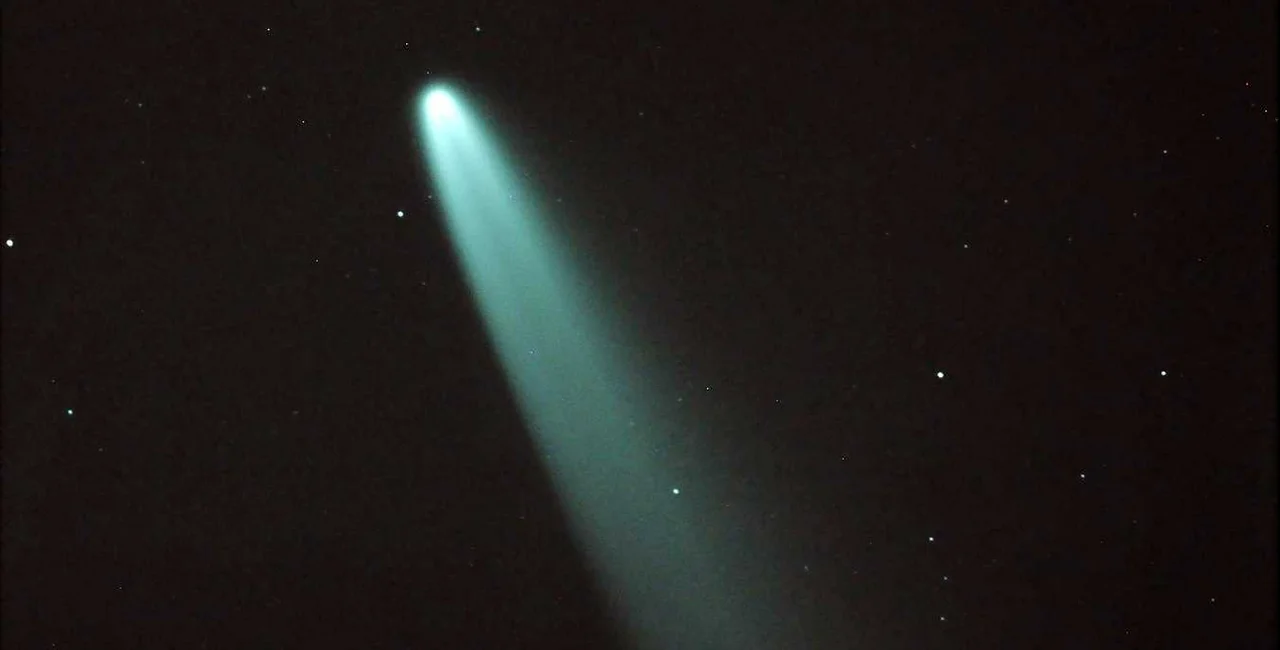Comet Neowise will be visible from Prague and across all of Europe for most of July, though for best visibility people should try to go a bit outside cities to places with less light pollution and also with no obstruction from trees or tall buildings.
The comet will be visible when they sky darkens after sunset to the northwest, close to the horizon and below the constellation Ursa Minor. Over the coming weeks, it will gradually get higher in the sky and be visible longer into the night, but at the same time it will be moving further away from the sun, which illuminates it. It will be closest to the earth July 23.
Sky charts made by astronomers help to show people where to look.
Where will Comet #NEOWISE be in the (late!) evening sky during July? This easy to use chart will show you – basically just look for the Big Dipper/Plough and “star hop” to the comet from there. Hopefully naked eye bright but have binocs ready in case it isn’t. 🙂 Chart 1 of 2 pic.twitter.com/rgYlWe0V9j
— mars_stu (@mars_stu) July 3, 2020
The comet is visible with the naked eye, but can be seen better with binoculars or a telescope. Just after sunset, Neowise will look like a fuzzy star, but when it is visible later in the evening its tail will become more prominent.
As the comet is low to the horizon, it is best seen from elevated areas in Prague that have a view to the northwest, such as Vítkov Hill, Vyšehrad, Riegrovy sady or the area behind the National Museum overlooking Hlavní nádraží.
The Štefánik Observatory in Petřín and the Ďáblice Observatory in Prague 8 will be open on clear nights, and people can look through large telescopes.
The better view from an observatory is currently from Ďáblice. “From Štefánik Observatory … it should be visible from around July 15, 2020. The problem is the comet is on the northwest sky very close to horizon, and we have quite high trees that way, so we cannot see it yet. Hopefully we will be able to see it [soon], since it gets darker earlier when the comet is higher on the sky, and it will be higher in the same time window,” Lukáš Veselý of Štefánik Observatory said.
PARTNER ARTICLE
“But our second observatory in Ďáblice can see it pretty nicely even now. Yesterday [July 13] they had special observation hours to observe it. They have a quite clear north horizon so from there there is no problem to see it for a few days already,” he added.
Images shot from Prague have already been a hit with the astronomical community. NASA chose a picture taken by Czech astronomer Miloslav Druckmüller as its Astronomy Picture of the Day (APOD) on July 10.
The comet, also known as C/2020 F3 (NEOWISE), passed behind the sun on July 3. It is already headed back into deep space and will not return for 6,800 years.
Neowise is the brightest comet visible in the northern hemisphere since Comet Hale–Bopp in 1997.
The comet’s name comes from NASA’s NEOWISE infrared space telescope, which spotted the comet March 27. “In its discovery images, Comet Neowise appeared as a glowing, fuzzy dot moving across the sky even when it was still pretty far away,” Amy Mainzer, NEOWISE principal investigator at the University of Arizona, said on the NASA website. “As soon as we saw how close it would come to the Sun, we had hopes that it would put on a good show.”
NASA has been able to determine the size and structure of the comet. “From its infrared signature, we can tell that it is about 5 kilometers across, and by combining the infrared data with visible-light images, we can tell that the comet’s nucleus is covered with sooty, dark particles left over from its formation near the birth of our solar system 4.6 billion years ago,” Joseph Masiero, NEOWISE deputy principal investigator at NASA’s Jet Propulsion Laboratory in Southern California, said.
The comet’s distinctive tail is caused by the sun heating the nucleus so it releases gas and dust into a temporary atmosphere called a coma. Sunlight and the solar wind turn this into the visible tail. Neowise has two tails. The first is magenta and made of gas and ions, while the second is golden color and made of dust.












 Reading time: 3 minutes
Reading time: 3 minutes 

























